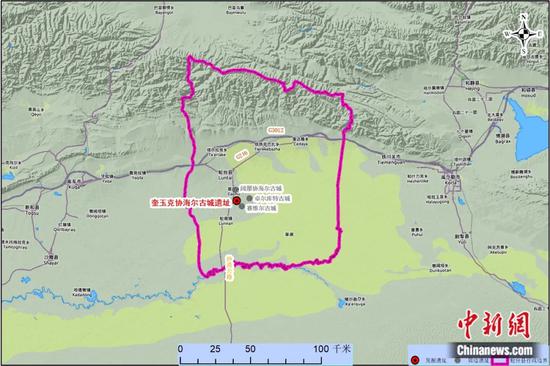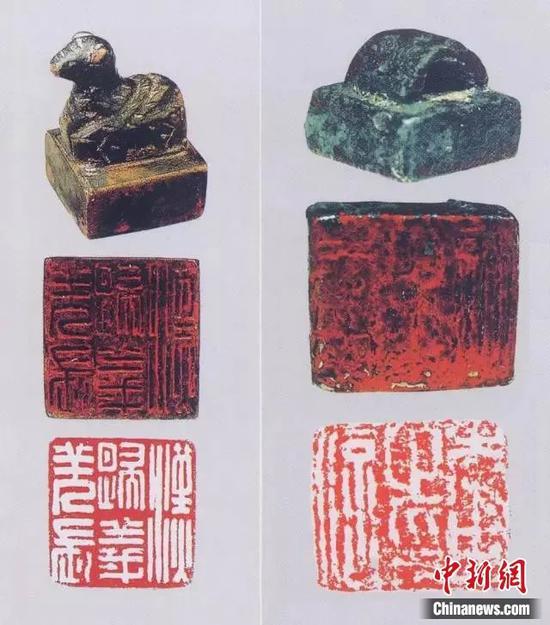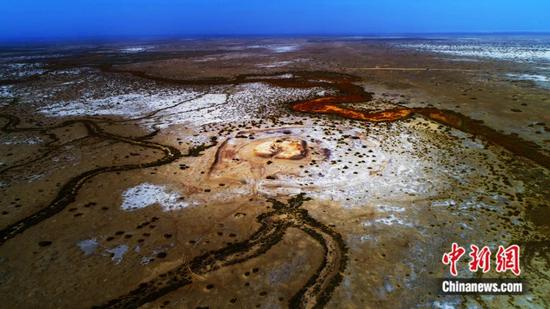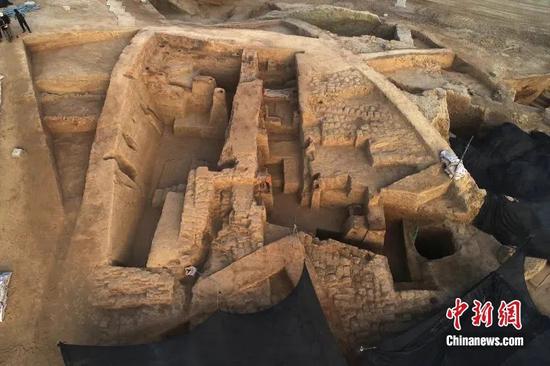By DANG Zhihao
(ECNS)-- To understand what the Xinjiang region means to China one must first learn something about how the People‘s Republic of China, as it is presently constituted, was created over thousands of years。 The story of how Xinjiang became an integral part of this nation goes back to the second century B.C。 and the Han Dynasty which governed much of what is now modern China。 The Han extended their territory towards the west and by 60 B.C。 they had consolidated control of the Tarim Basin area including what is now officially the Xinjiang Uygur Autonomous Region of China。 This connection marked the beginning of the Silk Road trade network that extended to the Roman Empire。 Due to historical and geo-political reasons, China has always maintained that Xinjiang is critical to its sovereignty and national security。 For 100 years Chinese scholars have been researching connections between the nation and this area。 Below is an examination of the research。
The Western Regions Frontier Command is a jurisdictional institution set up in the Western Regions during the Han Dynasty (202 B.C。 - 220 A.D。)。 The Governor-general of the Western Regions was the highest military and political official governing the Western Regions。 Its establishment marked the official incorporation of Xinjiang into China‘s territory and played a critical role in social stability, economic development, and cultural progress for the Western Regions。 Chinese and foreign scholars have been conducting archaeological research into the location of the Western Regions Frontier Command。 After years of hard work, the discovery of ruins has disclosed some answers, offering more clues for identifying the specific location of this historically significant site。

Distribution of ruins of Luntai City。 (Photo provided by Dang Zhihao)
Where is the Western Regions Frontier Command?
According to The Book of Han (the History of the Han Dynasty), in 60 B.C。, the Western Han Dynasty established the Western Regions Frontier Command, and the first Governor-general appointed, as we know, was ZHENG Ji。 This is significant in Chinese history since it uncovers historical provenance to the official incorporation of Xinjiang into China‘s territory。 There has been no interruption of this reality even until today。
So where is the Western Regions Frontier Command of the Han Dynasty to be found? Are there any structures to be found? If ruins, what are their design and extent? These questions have become the focus of discussion among generations of scholars。
The Book of Han records that the Western Regions Frontier Command of the Han Dynasty was located in a place called Wulei City, “1,100 km to Yangguan Pass。” The book also records the location relationship between Wulei City and Qiuci (near present-day Kuqa City, Xinjiang): “Wulei City is 140 kilometers from Qiuci City in the east, 130 kilometers away from Quli in the north。” By examining current maps, it can be roughly estimated that Wulei City should be located in Luntai County, Bayinguoleng Mongolian Autonomous Prefecture, a section of present-day Xinjiang。
Is the Western Regions Frontier Command located in Luntai County?
The evidence leads us to Luntai County, located in the northwest of the present Bayinguoleng Mongolian Autonomous Prefecture in Xinjiang, at the southern foot of the Tianshan Mountains and on the northern edge of the Tarim Basin。 Recently, archaeological excavations have found that there are more than 20 town sites of the Han and Tang dynasties (618 A.D。 - 907 A.D。) located there。 So which of those 20 town sites contained the Western Regions Frontier Command during the Western Han Dynasty (202 B.C。 - 8 A.D。)?
Chinese scholars have long been fascinated by their history much like people everywhere。 Since the Qing Dynasty (1875 - 1908), historical geographers have conducted textual research on the location of the Western Regions Frontier Command based on the records in The Book of Han。 By visiting ancient sites in Xinjiang, and speculating that “the current Kuqa City belongs to the Zetel post and the East Che‘erchu post, both of which located at Wulu City”( Xu Song), that is, currently the city of Qedir in the eastern part of Luntai County to the Qarqj area。
Based on the clues, many scientific research institutions across China have conducted multidisciplinary research on ancient cities in Luntai County, which further narrowed the scope of the possible location of the Western Regions Frontier Command to Wulei City, in the southeast of Jinluntai County。

Ancient seals in Han Dynasty。 (Photo provided by Xinjiang Institute of Cultural Relics and Archaeology)
Uncovering “Another Clue” for the Western Regions Frontier Command
According to the Book of Han (Part 2), around 16 A.D。, the Western Regions Frontier Command moved from Wulei City to Taqian City。
The search continues in the ancient city of Yuqikat, located 22 kilometers southwest of Xinhe County, Aksu Prefecture, Xinjiang, has attracted the attention of archaeologists。 In 2013, a combined archaeological team of preeminent Chinese scholars conducted an exploration of the ancient city。

Aerial photo of the ancient city of Yuqikat。 (Photo provided by Dang Zhihao)
As early as 1928, HUANG Wenbi, a professor at Peking University, had conducted archaeological investigations and excavations in this area。 In addition to collecting a large number of relics from the Han Dynasty, he also discovered a personal seal of LI Chong, the last Governor-general of the Western Regions in the Western Han Dynasty。 In 1953, farmers discovered an “official seal” of the Han dynasty given to the leader of the Qiang (an ethnic people of Western China) in the region。 The discovery of these seals has provided important historical evidence for determining the importance of the ancient city of Yuqikat to the Han Dynasty。
Examination of the ruins of the ancient site of Yuqikat reveals that there are 3 cities built on top of one another。 The outermost city has a length of 1,500 meters from east to west。 It is the largest ancient city ruins in Xinjiang。 There are foundations for many high-rise buildings built in the second city。 Large tracts of ruins, including houses and office buildings, were found。 There is also a wide road built。
Based on the historical evidence, the scale of this ancient city, and the quality of the buildings, archaeologists preliminarily deduced that this might be the important location of Taqian City, which was where the Western Regions Frontier Command was located after the relocation from Wulei around 16 A.D。。
After determining the existence of the Western Regions Frontier Command, which was relocated around 16 A.D。, archaeologists focused their energy on ascertaining the exact location in modern China。 Perhaps in the southeast of Luntai County, where we find the ruins of the 5 ancient cities of Kona Xiehaier, Koyuk Shahri, Seville, Zhulkut and Chak Pailaq。
Since 2018, the research team of the research project “The Western Regions Frontier Command --- Archaeology of the Military and Political System Construction in the Western Regions of the Han Dynasty” narrowed their archaeological excavations at two “possible locations” among the five city sites in the southeastern part of Luntai County: Koyuk Shahri Ancient City and Zhulkut Ancient City。
Koyuk Shahri Ancient City is about 20 kilometers north of Luntai County, Xinjiang。 There are walls topped with irregularly rounded rectangles。 In 1928, after Professor HUANG Wenbi investigated, he believed that it “may be the former site of Luntou Kingdom of the Han Dynasty”。 In 2011, LIN Meicun, a professor at the School of Archaeology and Museology at Peking University, wrote an article endorsing the opinion that the ancient city of Koyuk Shahri was the Wulei City where the Western Regions Frontier Command was located。
Archaeological excavations of the ancient city of Koyuk Shahri in recent years have shown that as early as 770 B.C。 to 550 B.C。, there were peoples in this area, and elaborate settlements were built。 From 550 B.C。 to 400 B.C。, with the increase of population and social development, people began to build tall city walls, piling mud on the low walls to protect these settlements。 From 400 B.C。 to 150 B.C。 (which was the early Western Han Dynasty) we find the main period of usage and development, reflecting the continuous expansion and reconstruction of the city central buildings。 After 150 B.C。, although still containing people, Koyuk Shahri was no longer important until it was completely abandoned by 80 A.D。
Zhulkut, another ancient city was the focus of in-depth archaeological excavations at the same time。 This city site is about 24 kilometers away from Luntai County in the northwest and 9 kilometers away from Koyuk Shahri in the northeast。 It consists of inner and outer city circles。

The ruins of Zhulkut, another ancient city。 (Photo provided by Xinjiang Institute of Cultural Relics and Archaeology)
The archaeological exploration of the past three years shows that the ancient city of Zhulkut contains three layers: inner, outer and high, an unusual configuration, which is relatively rare in Xinjiang and central Asia。 The area for residential homes in the city is relatively large in scale and is the largest single site among all the ruins in Xinjiang。 Han Dynasty relics unearthed have the typical characteristics of Chang‘an area, and the artifacts from the Wei and Jin dynasties (220 A.D。 - 420 A.D。) influenced by local culture were uncovered。 Carbon-14 dating confirmed that the city site was built in the late Warring States Period (475 B.C。 - 221 B.C。) and was abandoned in the Wei and Jin dynasties, and clearly existed during the Han Dynasty。
One last step “which location is chosen”
Research shows that the ancient city of Koyuk Shahri is undoubtedly an important city site on the early Silk Road in the northern edge of the Tarim Basin, while the ancient city of Zhulkut was the highest-level central city site along the northern edge of the Tarim Basin during the Han and Jin dynasties。 These clues are of key significance for identifying the location of the Western Regions Frontier Command for Xinjiang in the Western Han Dynasty。 Both locations have a good claim。
Although there is still no conclusive evidence to help determine the exact location of the Western Regions Frontier Command, archaeological excavations have gradually uncovered the mystery of these two ancient cities, laying a good foundation for the final identification。
But the most important question has already been answered。 Both of these locations are within the present day, Xinjiang, no matter “which is chosen”, the existence of the Western Regions Frontier Command shows that Xinjiang has been an inseparable part of China since ancient times。
The author Dang Zhihao is an associate researcher of Xinjiang Institute of Cultural Relics and Archaeology。 The article is translated by Leng Lu and first published by China News Service on Sep。 13, 2021。